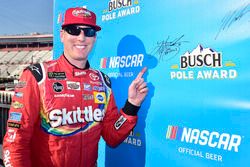Fireproof racing suits - Combining protection and style
Race cars drivers must be very well protected from the fire hazards. The fireproof suits they wear while seated their cars have evolved immensely since their first appearance.

Photo by: Motorsport Images












In the early days of car racing, driver wore only ordinary clothes like cotton shirts that offered no protection whatsoever. This all changed at the end of the ‘50s with the discovery of a new artificial fibre that had unsuspected properties.
“The first fireproof fibre was created in the United States,” said Romain Morizot, General Manager of Stand 21 to Motorsport.com.
It was an artificial aramid fibre invented by DuPont. It was first called HT-1, later trademarked as Nomex. It was a fibre that had outstanding resistance to fire.
Stand 21, a French company headquartered in Dijon, was a pioneer in the confection of safety clothing for race car drivers in the early ‘70s. The company also created the “Racing Goes Safer!” foundation - a non-profit organization with the primary purpose of promoting enhanced motorsports safety.
“Nomex was by far more resistant than the old Proban, which was basically a cotton fibre with a flame resistant surface treatment. After a few washes, the protective coating was vanished. In comparison, the Nomex fibre doesn’t burn and doesn’t transfer well the intense heat. When exposed to flames, it hardens and darkens, but it does not destroy itself,” Morizot explained.
Even if the skin is not directly exposed to the flames, a driver can suffer from heat-transfer injuries as fuel burns between 980 and 1200 degrees Celsius.
The first driving suits were made of just a single layer of Nomex, which provided limited fire protection. Then, it became obvious that two layers that sandwiched a fine quantity of air offered better protection to flames. The underwear, also made of Nomex, completed the wardrobe of race car drivers.
“Nowadays, the FIA, the SFI Foundation and other organisations have strict protection homologation tests for protective clothing for race car drivers,” Morizot added. “All certified suits and protective gears must provide a minimum protection to the drivers.
“However, today the biggest enemy of the race car driver is not really the fire but the intense heat, and that’s the biggest concern for racers who drive close-cockpit race cars such as stock cars and prototypes. With the climate changes, more and more races are held in very warm conditions. We must now produce protective suits that combine efficient cooling while maintaining adequate fire protection,” Morizot explained.
A promotional tool too
A race suit is also a moving billboard for sponsors. It is part of the marketing plans the teams create for their business partners.
The sponsors logos are no longer ordinary patches that are sewed onto the suit. The logos are either embroidered directly onto the surface layer of the suit, or sublimated directly (as it’s done for most sporting gears today).
Race suit manufacturers must respect confidentiality of the teams and drivers they work with. “We know in advance the new sponsors and the new drivers of the teams,” told us Bruno Vaglienti, the former F1 commercial director of Sparco and Puma.
“Here is a prime example. In early September 1991, we [at Sparco] received a highly confidential fax asking us to go immediately to the Monza circuit to take the measurements of a Formula 1 driver whose transfer from one team to another would be announced later,” Vaglienti recalled.
“We had to make race suits for Michael Schumacher who had just been signed by Benetton [from Jordan]. Twenty-four hours later, Schumacher got his two new Camel-yellow Benetton race suits in time for the press conference announcing his move to Benetton and to race the Italian Grand Prix. We used to work under tremendous pressure on occasions. It happened that we embroided the name of the driver on his suit just 30 minutes before the start of the press conference of the team!”
There’s also that funny story about a diminutive Japanese F1 driver. He was apparently so small that the manufacturer of his race suit was not able to sew all the sponsor patches simply because the suit was not large enough to fit them all on it! The only solution was to produce a set of… smaller patches!
Be part of Motorsport community
Join the conversationShare Or Save This Story
Subscribe and access Motorsport.com with your ad-blocker.
From Formula 1 to MotoGP we report straight from the paddock because we love our sport, just like you. In order to keep delivering our expert journalism, our website uses advertising. Still, we want to give you the opportunity to enjoy an ad-free and tracker-free website and to continue using your adblocker.














Top Comments